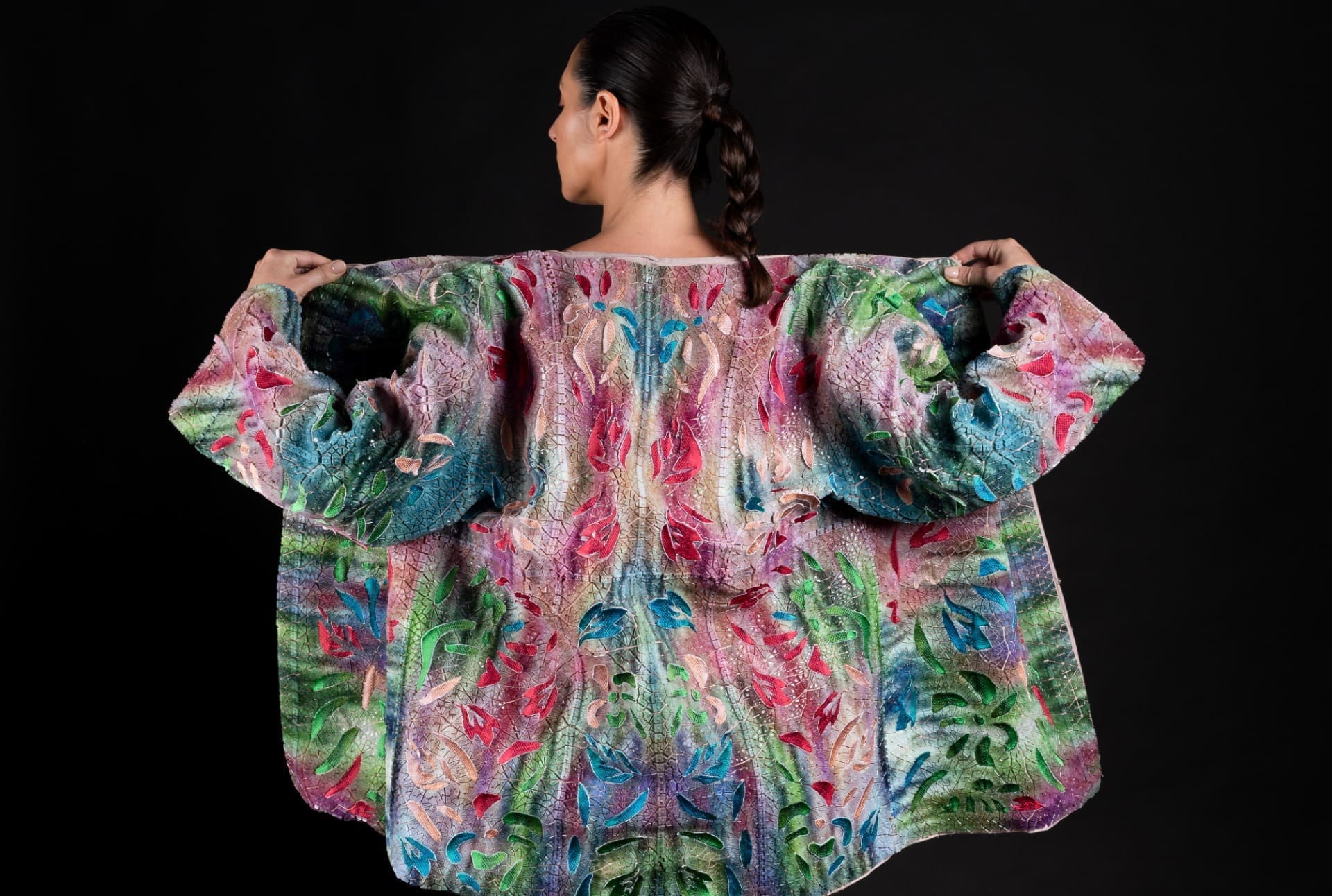Stratasys announced collaborations with renowned fashion designers Ganit Goldstein and Julia Koerner, to refine its innovative direct-to-textile PolyJet Technology.
The partnerships are part of the European Union-funded Re-FREAM research project, which brings together artists, designers, engineers and scientists to explore the use of 3D printing within the fashion industry.
At the virtual ARS Electronica Festival, Koerner revealed her latest collection, ARID. ARID is designed around nature-inspired geometries, and connectivity and adaptability of textiles with 3D-printed multi-color parts. The collection consists of 38 3D printed pieces that can be paired or organised into a variety of different looks or a full dress.

Using PolyJet technology from Stratasys, the digital designs were printed directly on sustainable fabrics in vibrant colours. Personal sizes can be easily adapted using modified 3D printed connectors that are obtained from the wearer’s 3D scans. All seams are connected with 3D printed joinery, which according to Stratasys is the first time that 3D printed connectors have been used in textile assembly.
Goldstein’s work has concentrated on integrating craft techniques with 3D direct-to-textile printing to create a Japanese-style dress. Inspired by Asian art embroidery and textile painting, her kimono style reflects the Japanese ‘ikat’ colouring process made possible by adopting an algorithm composed of the kimono’s 3D body scan of the kimono and converted into the printed surface during printing process.
This allows textiles to be utilised for the first time in 3D printing fashion as the skeleton of a garment, enabling artists to introduce into the market innovative creations that are not possible through other methods.
The partnerships for Re-FREAM, aims to entirely digitise end-to-end design workflows, allowing for the possibility of localised manufacturing and mass customization that many now imagine to be the future of fashion.
References:
3D printing industry

